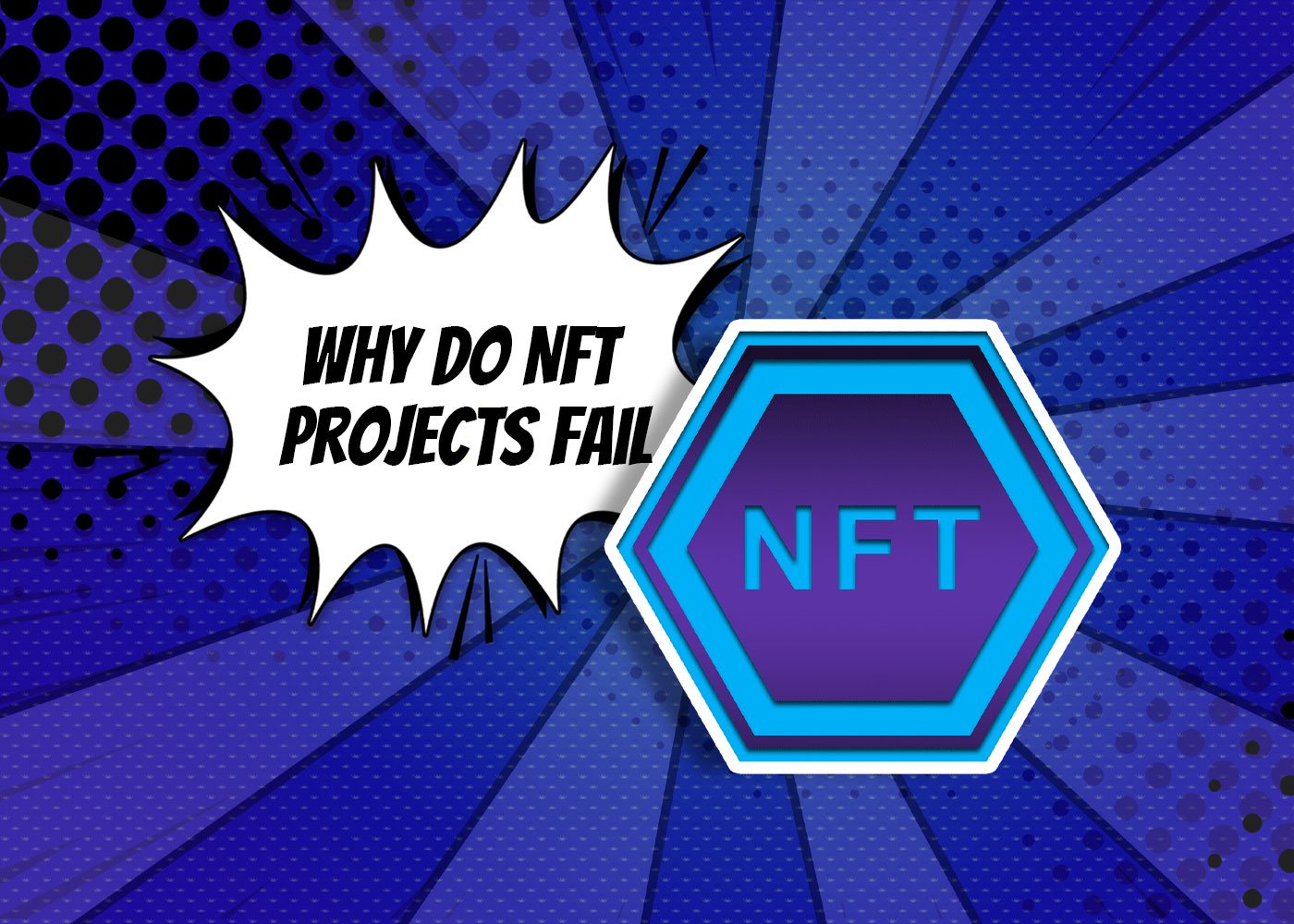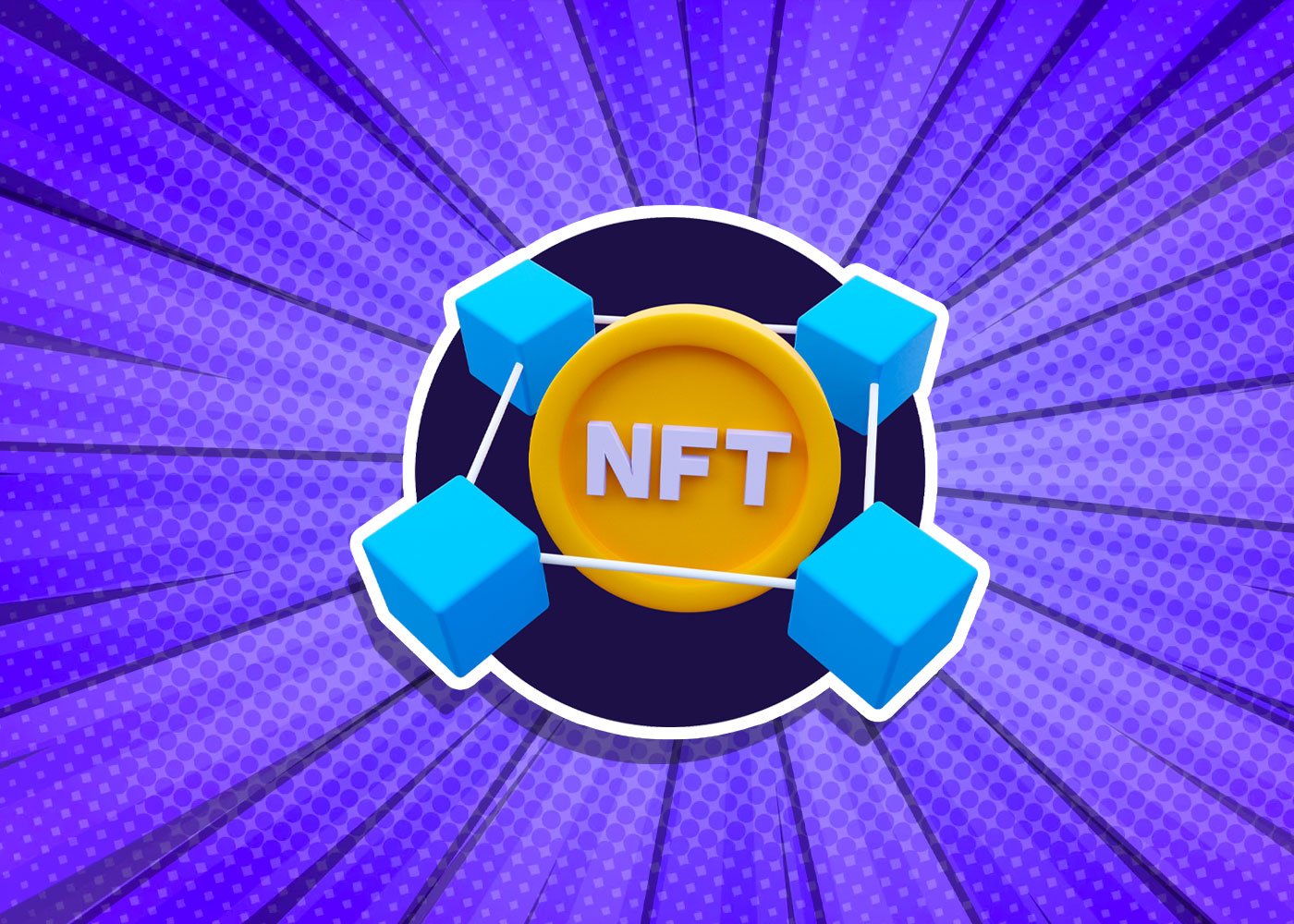Non-fungible tokens (NFTs) are a type of digital asset that is stored on a blockchain. Each NFT projects is unique and has a specific value that is determined by its rarity and the demand for it in the market. These tokens are often used to represent ownership or proof of authenticity of digital art, music, videos, and other types of creative works. NFTs are different from other cryptocurrencies such as Bitcoin or Ethereum because they are not interchangeable with other tokens of the same type. Each NFT is one-of-a-kind, and it cannot be replicated or divided into smaller units.
The use of NFTs has become increasingly popular in the art world to authenticate and sell digital art. NFTs provide a way for artists to monetize their digital creations and to prove that they are the original creators of the works. They also offer collectors a way to invest in unique pieces of art that are not easily replicated. However, the use of NFTs has also sparked controversy due to their environmental impact, as the process of creating and trading NFTs requires a significant amount of energy consumption. Additionally, there are concerns about the potential for fraud and scams in the NFT market, as it is still a relatively new and unregulated industry.
Overview of The Popularity of NFTs
Non-fungible tokens (NFTs) have gained significant popularity in recent years, particularly in the art world. The use of NFTs has provided a new avenue for artists to monetize their digital creations, which were previously difficult to sell due to the ease of copying and distributing digital files. NFTs allow artists to authenticate their work and create a unique market for their creations, which can attract high prices from collectors. Some of the most notable NFT sales include Beeple’s “Everydays: The First 5000 Days” which sold for $69 million at Christie’s auction house, and a tweet by Twitter CEO Jack Dorsey that sold for $2.9 million.
Aside from the art world, NFTs have also gained popularity in the music industry, where they can be used to represent ownership of digital music and concert tickets. In the sports industry, NFTs have been used to sell collectibles such as trading cards and virtual items. However, the use of NFTs has also sparked criticism and controversy, particularly regarding their environmental impact and the potential for fraudulent activity in the market. Despite these concerns, the popularity of NFTs shows no signs of slowing down, as more creators and collectors enter the market and explore the potential of this new technology.
The Importance of Analysis
Analyzing why non-fungible token (NFT) projects fail is crucial for understanding the strengths and weaknesses of the technology, and for developing more sustainable and successful projects in the future. NFT projects can fail for various reasons, such as poor execution, lack of demand, inadequate marketing, or simply being ahead of their time. By examining the reasons for failure, developers can identify areas of improvement and make better-informed decisions about future projects.
In addition, studying failed NFT projects can provide valuable insights into the broader adoption and acceptance of NFTs. As the technology is still relatively new, there is still much to learn about how NFTs fit into existing industries and how they can be used to create new opportunities. By analyzing why some projects succeed while others fail, we can gain a deeper understanding of how to leverage the potential of NFTs to create long-term value and drive innovation in various sectors. Ultimately, learning from failure is an essential part of the innovation process, and NFTs are no exception.
Lack of a Clear Vision
Having a clear vision for non-fungible tokens (NFTs) is essential for building successful and sustainable projects. NFTs offer a wide range of possibilities, from representing ownership of digital art and music to creating unique digital experiences and virtual worlds. However, with so many potential use cases, it is crucial to have a clear understanding of the value proposition and goals of each project. A well-defined vision can help guide decision-making, focus resources, and communicate the project’s value to stakeholders and potential users.
Furthermore, a clear vision can also help ensure the long-term success and adoption of NFTs as a technology. NFTs are still in their early stages of development, and many projects are experimenting with different use cases and business models. However, without a clear vision, these projects may struggle to gain traction and secure long-term sustainability. By defining a clear vision for NFTs, developers and entrepreneurs can help create a shared understanding of the potential of the technology and establish a roadmap for future innovation and growth. Ultimately, a clear vision for NFTs is essential for building a strong foundation for the technology and unlocking its full potential.
How a Lack of a Clear Vision Can Cause NFT Projects to Fail
A lack of a clear vision can be a significant factor in the failure of non-fungible token (NFT) projects. Without a well-defined value proposition or set of goals, NFT projects may struggle to gain traction in the market and secure long-term sustainability. A lack of vision can lead to poor decision-making, unfocused resource allocation, and difficulty in communicating the project’s value to stakeholders and potential users. It can also make it challenging to differentiate the project from competitors or other NFT projects, leading to a lack of demand and ultimately project failure. Furthermore, a lack of vision can result in a lack of innovation, as developers may struggle to identify new and exciting use cases for NFTs. Overall, having a clear vision is critical for building a strong foundation for NFT projects, gaining user adoption, and driving innovation in the technology.
Problems Driven By Poor Execution
Proper execution is essential for the success of non-fungible token (NFT) projects. Even the most well-defined vision and promising concept can fail without proper execution. Proper execution involves implementing the vision effectively and efficiently, ensuring that the project meets the needs of users and stakeholders. This includes aspects such as designing intuitive user interfaces, providing reliable infrastructure, ensuring security and privacy, and optimizing performance. Proper execution also involves effective project management, which includes planning, budgeting, monitoring, and adjusting the project as needed. By executing the project properly, developers can ensure that it meets the needs of users, is reliable, and provides value to stakeholders.
Furthermore, proper execution is critical for the broader adoption and acceptance of NFTs as a technology. NFTs are still relatively new, and many potential users and investors may be hesitant to participate in the market due to concerns about security, ease of use, or other factors. By executing NFT projects properly, developers can demonstrate the value and potential of the technology and build trust with users and investors. Proper execution can also drive innovation in the technology by creating new use cases and expanding the possibilities of what NFTs can do. Ultimately, proper execution is essential for building a strong foundation for NFT projects and unlocking the full potential of the technology.
How Poor Execution Can Cause NFT Projects to Fail
Poor execution can be a significant factor in the failure of non-fungible token (NFT) projects. Poor execution can manifest in various ways, such as a poorly designed user interface, inadequate infrastructure, security vulnerabilities, or slow and unreliable performance. These issues can result in a poor user experience, which can lead to a lack of demand and ultimately project failure. Poor execution can also lead to cost overruns, missed deadlines, and project scope creep, which can result in a lack of financial sustainability. In addition, poor execution can damage the reputation of the project and the broader NFT market, which can make it more challenging to attract users and investors in the future.
Furthermore, poor execution can hinder the broader adoption and acceptance of NFTs as a technology. Poor execution can create doubts about the viability and potential of NFTs and reinforce negative perceptions about the technology. It can also limit the range of use cases for NFTs and restrict the possibilities for innovation in the market. Ultimately, poor execution is a significant risk for NFT projects, and developers must prioritize effective and efficient execution to maximize the chances of success.
Limited Utility
The concept of utility in non-fungible tokens (NFTs) refers to the value or usefulness that NFTs provide to their owners or users beyond their inherent value as unique digital assets. While NFTs are primarily associated with representing ownership of digital art and collectibles, they can also provide other types of utility. For example, NFTs can be used to access exclusive content, such as music, videos, or virtual experiences. They can also be used to represent membership in a community or provide other benefits, such as discounts or voting rights. The utility of NFTs can enhance their value proposition and increase their potential use cases, making them more appealing to a broader range of users and investors.
The concept of utility is critical for the long-term sustainability and adoption of NFTs as a technology. Without utility, NFTs may be viewed as mere novelty items or speculative investments, with limited real-world use cases. By providing utility, NFTs can become more integrated into the digital economy, providing value beyond their uniqueness as digital assets. This can drive innovation in the technology and expand the possibilities for future use cases. Ultimately, the concept of utility is an essential consideration for NFT projects, as it can help differentiate them from competitors and increase their potential for long-term success.
Analysis of How a Limited Utility Can Cause NFT Projects to Fail
A limited utility can be a significant factor in the failure of non-fungible token (NFT) projects. NFTs with limited utility may struggle to gain user adoption and generate sustained demand, as users may perceive them as having little practical value beyond their uniqueness as digital assets. This can limit the range of use cases for NFTs and restrict the possibilities for innovation in the market. Moreover, a lack of utility can also limit the potential for generating revenue from the NFT project, which can result in financial sustainability issues, ultimately leading to project failure.
Furthermore, a limited utility can also hinder the broader adoption and acceptance of NFTs as a technology. Limited utility can reinforce negative perceptions about the viability and potential of NFTs and make it more challenging to attract users and investors in the future. Additionally, a lack of utility can limit the possibilities for integrating NFTs into the digital economy, making it more challenging to drive innovation in the technology. Overall, a limited utility is a significant risk for NFT projects, and developers must prioritize providing utility to maximize the chances of success. By providing a range of useful applications for NFTs, developers can enhance the value proposition of NFTs, expand their potential use cases, and drive innovation in the technology, ultimately leading to sustained success.
How Market Saturation Affects NFT Projects
Market saturation refers to a situation where there are too many similar non-fungible token (NFT) projects available in the market, making it challenging for any single project to gain traction or stand out. Market saturation can be a significant issue for NFT projects, particularly those that are not unique or offer limited utility. In such cases, potential buyers may struggle to distinguish one project from another, leading to a lack of demand for any individual project. This can result in financial sustainability issues and ultimately lead to project failure.
Market saturation can also lead to a lack of innovation in the NFT market, as developers may feel compelled to create similar projects to compete with established projects. This can stifle creativity and limit the range of use cases for NFTs, ultimately resulting in a less dynamic and attractive market. To succeed in a saturated market, NFT projects must differentiate themselves from competitors by offering unique features, applications, or experiences. By offering compelling value propositions, NFT projects can stand out in a crowded market, generate sustained demand, and increase their potential for long-term success.
Analysis of How Market Saturation can Cause NFT Projects to Fail
Market saturation is a significant risk factor for non-fungible token (NFT) projects, as it can lead to a lack of demand, financial sustainability issues, and ultimately project failure. In a saturated market, NFT projects may struggle to stand out from competitors and attract potential buyers. This can limit the potential for revenue generation and make it challenging for projects to sustain themselves over the long term. Moreover, market saturation can also lead to a lack of innovation and creativity in the NFT market, which can result in a less dynamic and attractive market for both buyers and sellers.
In addition, market saturation can lead to price competition, which can reduce the overall value of NFTs and lead to decreased demand for individual projects. This can create a negative feedback loop, where falling demand leads to lower prices, which in turn leads to further decreased demand. Ultimately, this can make it difficult for NFT projects to generate sustained interest and demand from potential buyers, leading to project failure. Therefore, it is critical for NFT projects to differentiate themselves from competitors by offering unique value propositions and innovative applications. By doing so, NFT projects can increase their potential for success in a saturated market and contribute to a more dynamic and innovative NFT ecosystem.
Failure in Attracting the Right Audience
Targeting the right audience is critical for the success of non-fungible token (NFT) projects. The audience for NFTs is vast and diverse, ranging from art collectors and investors to gamers and sports fans. It is essential for NFT projects to identify and understand their target audience to develop tailored marketing strategies and effectively communicate the value of their projects to potential buyers. By doing so, NFT projects can maximize their chances of success and generate sustained demand for their tokens.
Targeting the right audience can also help NFT projects to develop a loyal and engaged user base. By understanding the needs and preferences of their target audience, NFT projects can create user experiences and value propositions that resonate with their users. This can lead to increased user engagement, higher retention rates, and ultimately, increased revenue streams. Moreover, targeting the right audience can also help NFT projects to build a community around their projects, which can drive organic growth and create a sense of belonging among users.
Analysis of How a Failure to Attract the Right Audience Can Cause NFT Projects to Fail
Failure to attract the right audience can be a significant factor in causing NFT projects to fail. If NFT projects do not understand or effectively communicate their value propositions to their target audience, they may struggle to generate demand for their tokens. This can result in low sales, stagnant growth, and ultimately, project failure. Moreover, if NFT projects fail to attract the right audience, they may struggle to build a loyal user base, which can limit their potential for long-term success.
Lack of Community Engagement
Community engagement is an essential factor for the success of non-fungible token (NFT) projects. NFT projects rely on their user base for sustained demand and growth, and building a strong community can help to generate organic growth and create a sense of belonging among users. Community engagement can take various forms, including social media interactions, events, and collaborations. By engaging with their user base, NFT projects can build brand awareness, increase user retention rates, and create a loyal and engaged user base.
Secondly, community engagement can also lead to increased innovation and creativity in the NFT ecosystem. By soliciting feedback and ideas from their users, NFT projects can develop new and innovative use cases for their tokens. This can help to differentiate NFT projects from competitors and contribute to the growth and vibrancy of the NFT ecosystem. Also, community engagement can help NFT projects to identify and address user needs and preferences, ultimately leading to a better user experience and increased user satisfaction. Overall, community engagement is a crucial factor for the success of NFT projects, as it can help to generate sustained demand, build a loyal user base, and contribute to innovation and creativity in the NFT ecosystem.
In addition, community engagement can also help to establish trust and credibility for NFT projects. By engaging with their users and building a transparent and open dialogue, NFT projects can demonstrate their commitment to their user base and build a reputation for reliability and credibility. This can help to attract new users, build partnerships and collaborations, and ultimately contribute to the long-term success of NFT projects. Therefore, NFT projects should prioritize community engagement as a crucial element of their marketing and growth strategies.
Analysis of How a Lack of Community Engagement can Cause NFT Projects to Fail
A lack of community engagement can be a critical factor in causing NFT projects to fail. Without a strong and engaged user base, NFT projects may struggle to generate demand for their tokens, resulting in low sales and stagnant growth. Moreover, without community engagement, NFT projects may struggle to build brand awareness, differentiate themselves from competitors, and establish trust and credibility with their users. This can limit their potential for long-term success and make it challenging to attract new users and build partnerships and collaborations within the NFT ecosystem.
Conclusion
NFT projects can fail for a variety of reasons, and it is essential to understand these factors to develop successful projects. Firstly, a lack of a clear vision can lead to confusion and limited user adoption, ultimately resulting in project failure. Secondly, poor execution, such as technical issues or inadequate marketing strategies, can hamper user engagement and lead to low sales, ultimately limiting the project’s potential for success.
Thirdly, NFT projects with limited utility may struggle to attract users and generate demand for their tokens. Additionally, market saturation can limit the potential for growth and differentiation among NFT projects, ultimately leading to a lack of demand and project failure. Lastly, failing to attract the right audience and establish strong community engagement can make it challenging to build brand awareness, establish trust and credibility, and sustain long-term growth, ultimately resulting in project failure.
In summary, successful NFT projects require a clear vision, proper execution, strong utility, differentiation, and community engagement. Failing to address these factors can lead to limited user adoption, low demand, and project failure. Therefore, careful planning and execution are essential to developing successful NFT projects in the increasingly competitive NFT market.
Final Thoughts and Recommendations
NFTs have proven to be a revolutionary technology with tremendous potential for various industries, including art, music, sports, and gaming. However, it is essential to approach NFTs with caution and careful consideration to avoid potential risks and pitfalls.
For individuals looking to invest in NFTs, it is crucial to research and understand the projects thoroughly before making any investment decisions. Additionally, it is recommended to focus on NFT projects with a clear vision, strong utility, and community engagement.
For those looking to develop NFT projects, it is essential to develop a clear vision, execute it properly, and engage with the community to ensure the project’s long-term success. Furthermore, exploring new use cases and developing innovative applications for NFTs can help differentiate projects and generate demand in the increasingly competitive NFT market.
Overall, NFTs present a significant opportunity for growth and innovation, but it is crucial to approach them with caution and a focus on long-term success to avoid potential pitfalls and maximize their potential.
Areas for Further Research
- Scalability and sustainability: As the popularity of NFTs continues to grow, there is a need for scalable and sustainable solutions that can support the increasing demand for NFTs. Research into these areas can help identify potential solutions to address these challenges.
- Interoperability: Currently, NFTs are primarily created and traded on individual blockchain networks, limiting their interoperability. Research into developing cross-chain solutions can enhance the utility and value of NFTs.
- Legal and regulatory frameworks: As NFTs gain wider adoption, there is a need to establish legal and regulatory frameworks that can ensure consumer protection and prevent potential fraud and scams.
- Environmental impact: The high energy consumption of some blockchain networks used to create and trade NFTs has raised concerns about their environmental impact. Further research can help identify potential solutions to reduce the carbon footprint of NFTs.
- Social impact: NFTs can have a significant impact on the art industry, with potential implications for artists, collectors, and institutions. Research into the social impact of NFTs can help identify potential opportunities and challenges associated with their adoption.































































































![BitTorrent [New]](https://s2.coinmarketcap.com/static/img/coins/64x64/16086.png)














